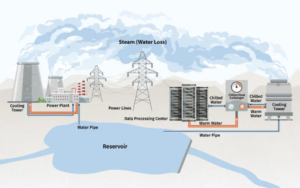Things aren’t looking too good for low lying areas on the ocean’s coasts.
For decades, scientists have carefully tracked changes in the Thwaites Glacier, which already loses around 50 billion tonnes of ice each year and causes 4% of global sea-level rise.
Thwaites flows off the Antarctic continent into the Southern Ocean. At 120 kilometres across, it is the world’s widest glacier. Across about two-thirds of that expanse, ice flows relatively quickly into the ocean. The remaining one-third is the eastern ice shelf, where ice had been flowing more slowly1. In part, that’s because the ice grinds to a halt when it reaches an underwater mountain about 40 kilometres offshore. The submerged mountain holds back the ice flow like a cork in a bottle.
–Nature, by Alexandra Witze, https://www.nature.com/articles/d41586-021-03758-y







